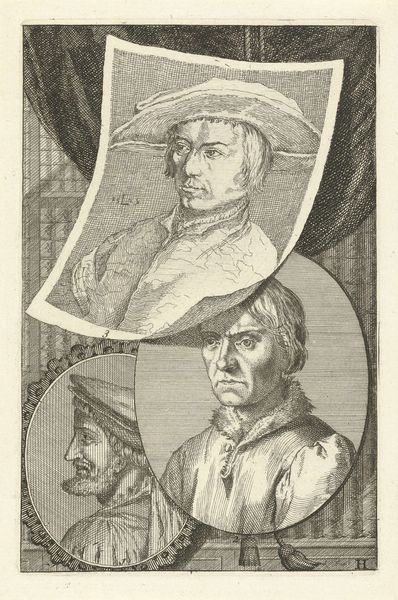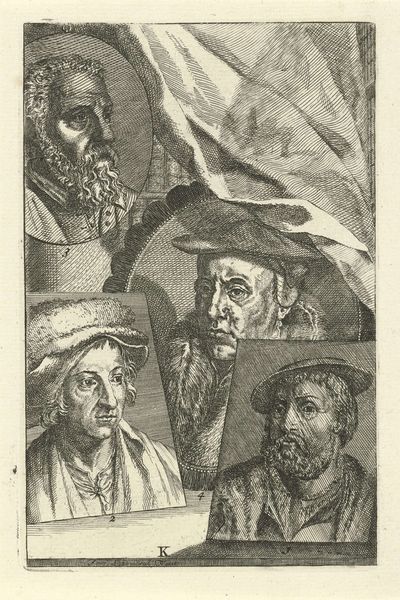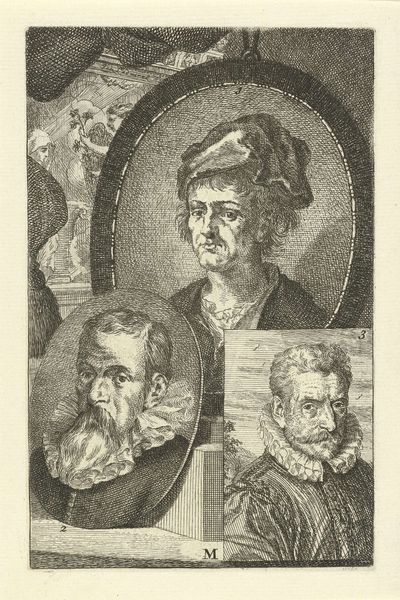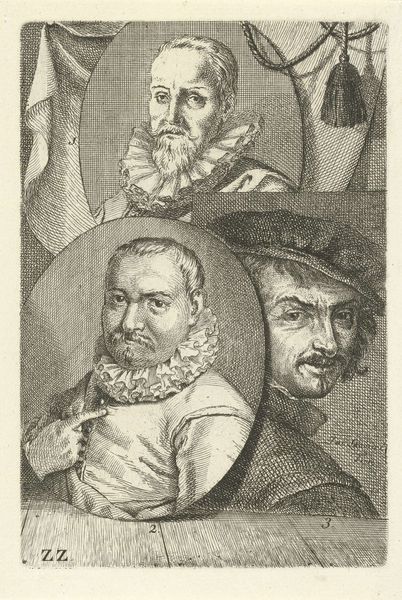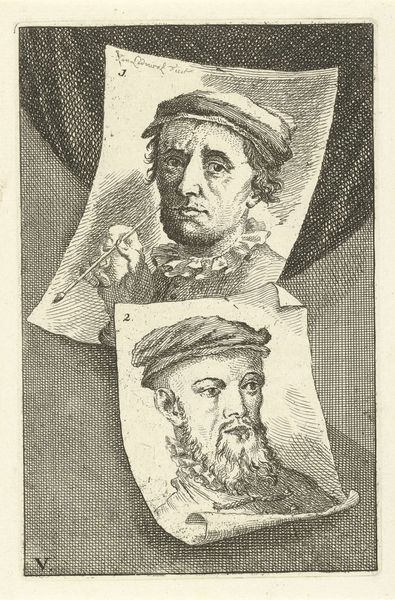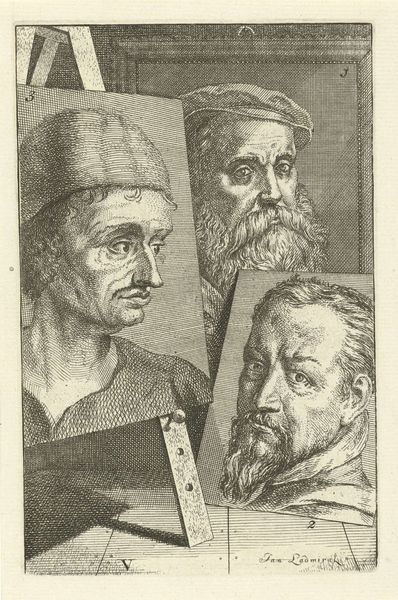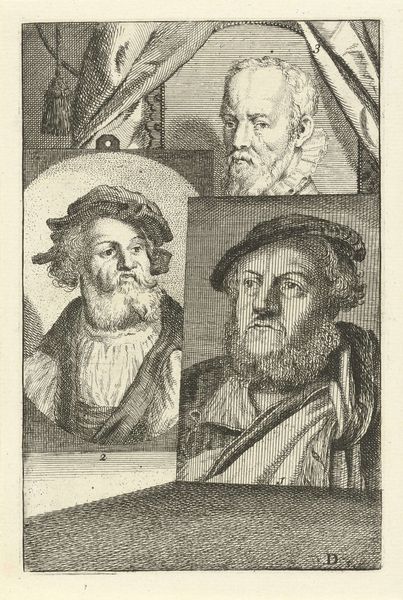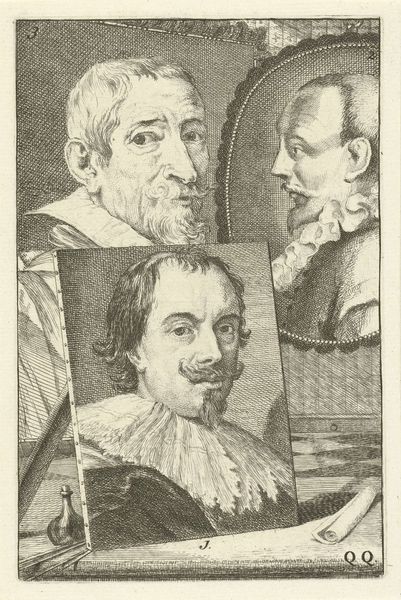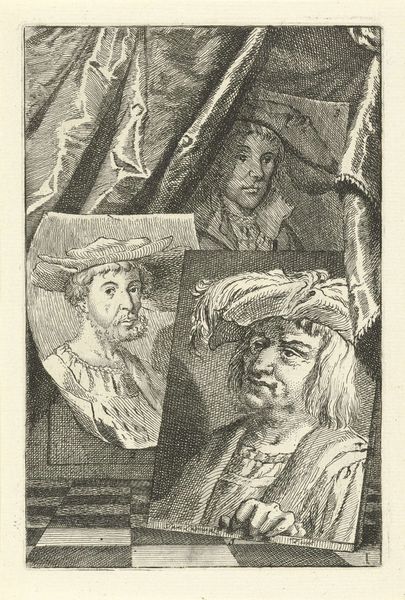
Portretten van Albert van Ouwater, Dieric Bouts, Rogier van der Weyden en Albrecht Dürer 1764
0:00
0:00
print, engraving
#
portrait
# print
#
old engraving style
#
caricature
#
limited contrast and shading
#
history-painting
#
academic-art
#
engraving
Dimensions: height 154 mm, width 100 mm
Copyright: Rijks Museum: Open Domain
Editor: Here we have "Portraits of Albert van Ouwater, Dieric Bouts, Rogier van der Weyden and Albrecht Dürer," an engraving from 1764 by Jan L' Admiral. It feels like a hall of fame, these four artists presented in separate frames. What do you see in this work? Curator: This piece really speaks to the construction of artistic legacy and the way historical narratives are shaped. These aren't simply portraits; they are carefully curated representations, referencing each artist's perceived status in art history during the 18th century. Consider the conscious act of choosing which artists to memorialize, and in what manner. Who is missing, and why? Editor: That's fascinating! So, it's less about accurate depictions and more about a constructed ideal? Curator: Precisely! And let’s consider the medium – engraving – and its accessibility. Printmaking allowed for the wide dissemination of these artistic ideals. It asks us to reflect on the power dynamics inherent in canon formation: Whose voices are amplified and whose are silenced? This extends to our contemporary moment, doesn’t it? Editor: It absolutely does. I hadn't considered the social context of creating the work so long after the artists had lived, but framing these artists becomes a statement in itself. Curator: Exactly. It shows how the selection and portrayal of figures reflect the values and ideologies of a later era. The 'old engraving style' itself invokes the past and adds another layer of historical interpretation. It asks us, what biases might we unknowingly carry forward? Editor: This has given me a lot to consider about how we build and maintain artistic narratives. Curator: Indeed. It’s a powerful reminder that art history is not a static recounting of facts but an ongoing conversation shaped by the present.
Comments
No comments
Be the first to comment and join the conversation on the ultimate creative platform.
